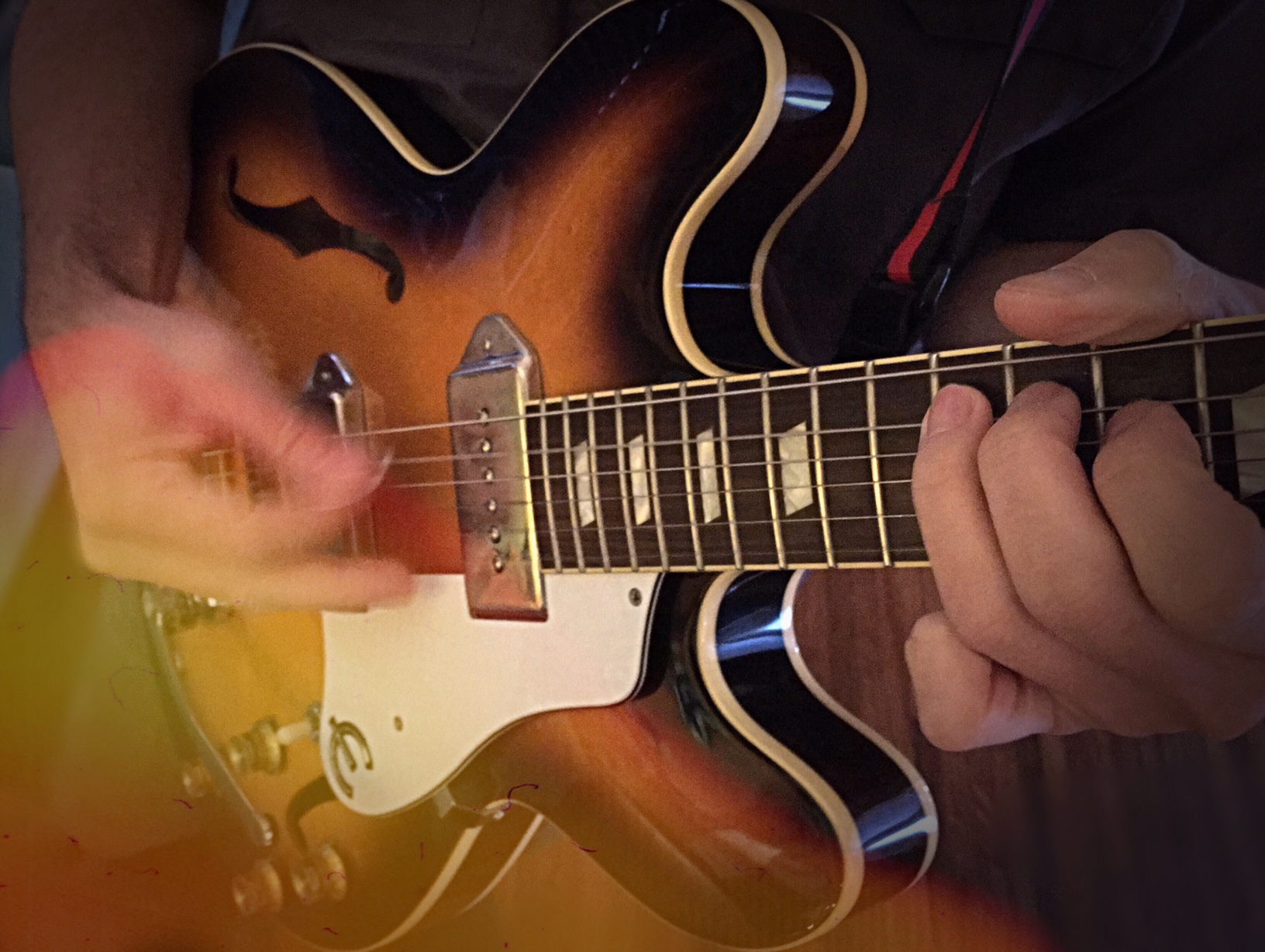Three Steps to Avoiding Practice Fatigue

When I asked my Facebook followers what they wanted me to write about this week, I was excited to see a question about maintaining physical and mental health in the practice room.
As guitarists, it’s easy for us to put our heads down for hours at a time, only coming up when we’ve gotten hungry or tired enough to eat or sleep, before jumping back on the instrument we love so much.
Because it’s easy to get swept away when practicing guitar, it is important to maintain your physical health and mental focus in order to get the most out of any time spent in the practice room.
In this column, I’ll lay out some of the concepts I apply to my own routine in order to avoid back, shoulder, leg and arm pain, as well as help me keep focused mentally when working for short or long periods in the woodshed.
Check out these items, and then please share (in the comments below the lesson or on Facebook) your tips for maintaining physical and mental strength in the guitar practice room.
Step 1: Scheduling Practice Breaks
The first issue to address when it comes to maintaining physical health in the practice room is scheduling regular breaks into your routine.
All the latest guitar news, interviews, lessons, reviews, deals and more, direct to your inbox!
Taking a five-minute break every 30 minutes, or a 10-minute break every 60 minutes, will not only give you a chance to stand up and stretch out your muscles, but it allows you to rest your focus for a bit before moving on to the next exercise in your routine.
Sometimes we feel we have to press on and do hours at a time in the practice room. But after a while, our minds and bodies will burn out, and at that point you are just wasting energy on exercises that aren’t producing much of a return for your time.
It is always better to work in short, highly focused bursts in the practice room than to slog on and become distracted mentally or sore physically. Therefore, scheduling breaks into your routine can help remind you when to take a few minute mental and physical stretch before going back refreshed to the next stage in your practice routine for that day.
Step 2: Correct Posture and Using a Strap
One of the biggest questions I get asked by guitarists is, “How should I sit when practicing, especially for long periods of time, in the practice room?”
The answer to this question differs for each person, but there are some common principals we can all use to ensure that our posture is helping us and not hindering us in the practice room. Depending on your physicality, you might prefer to have both feet flat on the floor and your back straight against the chair you’re sitting in.
If this is the case, you might want to use a footstool or guitar cushion support such as the one made by Dynarette to help support your guitar when sitting in this position. Though, if you’re like me, you might be more comfortable with one leg crossed over the other and your back slightly curved over the guitar, but not hunched, as that can cause shoulder and back problems pretty quickly.
If you prefer the second type of posture, then resting the guitar on your picking-hand thigh, right for right-handers and left for left-handers, will allow you the closest access to the instrument compared to resting it on the opposite thigh when practicing.
Either way can work for you as far as posture is concerned, so try them both out.
I used footstools for many years, but having my hips displaced like that caused me back issues, and after switching to the cross-legged position, that went away. But I have had friends with the opposite experience, so test and see for yourself.
Sitting in a chair is always preferential to sitting on the corner of a bed or on a couch, especially for long practice sessions, as chairs will provide more support regardless of which posture you choose.
Lastly, using a strap in the practice room can help take some of the weight of the guitar off of your arms and move it onto your shoulders and body as a whole. This will prevent you from feeling like you have to hold the guitar in place with your arms as you play, which can cause undo tension and prevent you from being able to play at the best of your ability as you have to expend energy to hold the instrument on your thigh.
Step 3: Exercise and Stretching
Over the years, I’ve found that exercising and stretching throughout the day is very helpful for preventing strain issues, such as back, leg and arm pain, as well as injury in the practice room. I stretch out my fingers every 10 to 15 minutes and my arms every 30 or so in when practicing.
Throughout the day I do exercises to help strengthen my arms, legs and core such as crunches, push-ups, walking and yoga.
If you find you have a hard time sitting for a long time practicing, or that you are experiencing sore muscles, especially your arms and back, then exercising and stretching as part of your daily routine might be the thing you need to get over these physical humps in the woodshed.
To maintain mental stamina and focus in the practice room, mediation or floating can be excellent ways to boost your mental strength, as well as provide creative influence away from the instrument.
Though not music related, thinking about the physical side of practicing, and preparing yourself physically for time in the practice room, can go a long way in ensuring that you avoid injury and are able to get the most out of your time on the instrument.
How do you approach maintaining your arm, hand and body health as a guitarist? Share your thoughts in the COMMENTS section below.
Matt Warnock is the owner of mattwarnockguitar.com, a free website that provides hundreds of lessons and resources designed to help guitarists of all experience levels meet their practice and performance goals. Matt lives in the UK, where he is a lecturer in Popular Music Performance at the University of Chester and an examiner for the London College of Music (Registry of Guitar Tutors).
Matt Warnock is the owner of mattwarnockguitar.com, a free website that provides hundreds of lessons and resources designed to help guitarists of all experience levels meet their practice and performance goals. Matt lives in the UK, where he teaches Skype guitar students all over the world, and is an examiner for the London College of Music (Registry of Guitar Tutors).
